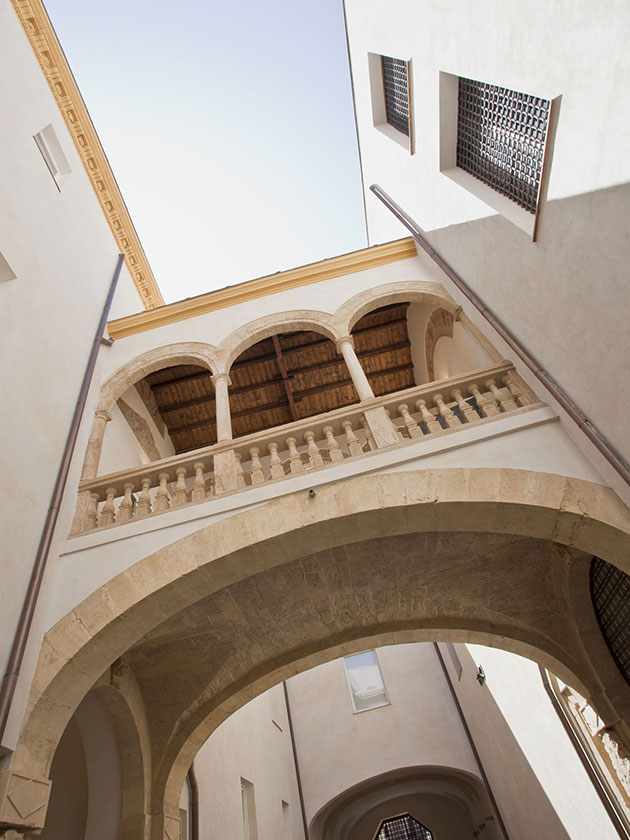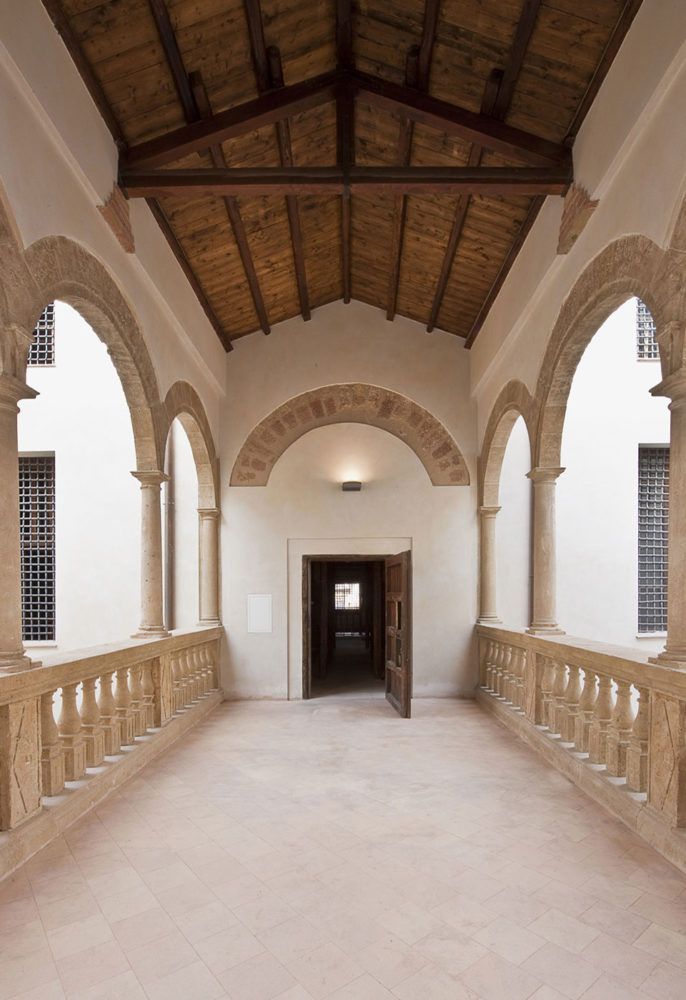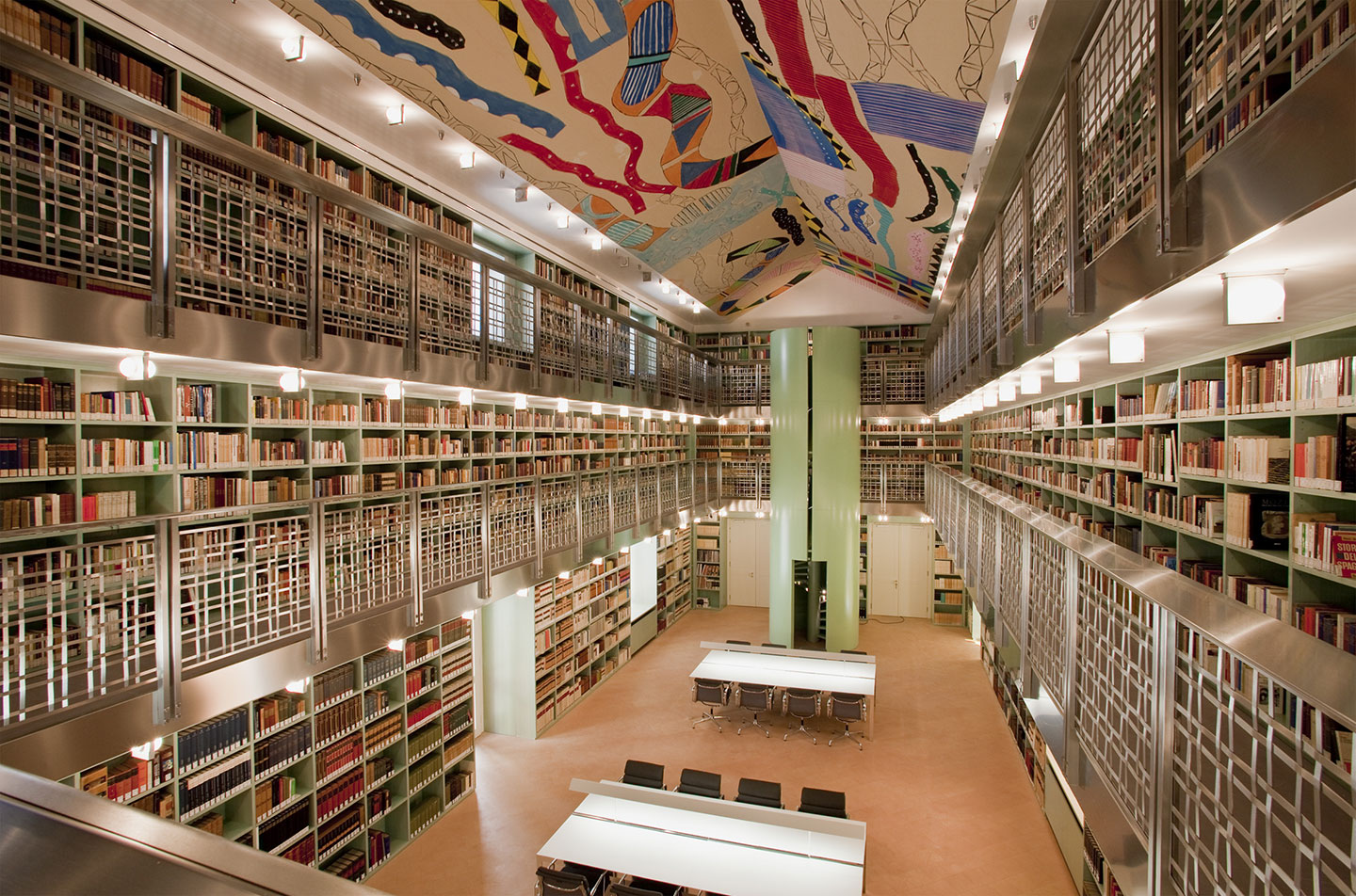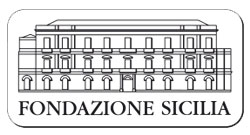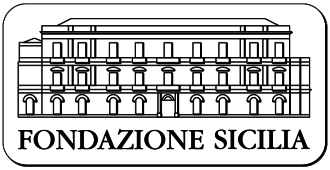To promote the cultural development of the city of Palermo, the Fondazione Sicilia, chaired by Professor Giovanni Puglisi, decided that Palazzo Branciforte, a historic building in the heart of the city, should be restored to its former glory.
Major restoration work began in 2007 based on a project by the world-renowned architect and designer Gae Aulenti, who made the building more modern and functional, maintaining the heritage of the past and adding a contemporary design.
Palazzo Branciforte is a unique place, combining identity and innovation. A place where history, archaeology, modern and contemporary art, books, and the great Italian culinary tradition come together.
Opened to the public in May 2012, the Palazzo, which extends over an area of 5.650 square meters, hosts the offices of the Fondazione and houses some of the Fondazione Sicilia collections, which are open to the public.
On display on the ground floor is the archaeological collections; the main floor houses the stamp, coin, majolica and sculpture collections, along with the historical Library which preserves more than 40,000 books from the Fondazione Sicilia collection. From here you can make your way to the splendid rooms of the Monte di Santa Rosalia, a rare surviving example of wooden architecture, now housing temporary art exhibitions.
At Palazzo Branciforte culture goes hand in hand with good food and the flavours of the Mediterranean. In a wing of the ground floor we find the Città del Gusto, the famous Gambero Rosso cooking school, for both professionals and amateurs. Next to the school, in a stunning architectural setting, we have the prestigious Ristorante Branciforte, open also outside of museum hours.
The Auditorium Branciforte, equipped with the latest technology, can host conferences and cultural events, offering an exclusive area for those who want to use the Palazzo for their meetings.
The Emporio Branciforte offers the public a selected range of publications, art objects, and food and drink products.
All activities are coordinated by Civita Sicilia, which is also responsible for managing the museum services and the cultural promotion of this new area.
The history
The history of Palazzo Branciforte is closely tied with the city of Palermo
and has been ever since it was built, probably at the end of the sixteenth century, as noble house by Nicolò Placido Branciforte Lanza, Count of Raccuja.
The Count of Raccuja’s heirs built an extension in the mid-seventeenth century, having been given permission by the Palermo Senate to incorporate the road within the grounds; on completion, at the beginning of the next century, its surface area had almost doubled; the old Palazzo Raccuja, also known as Pietraperzia and Butera, became one of the grandest aristocratic residences in the city.
In 1801, the government asked the Branciforte family to lease the entire building to the Palermo Senate, to house the new “Monte della Pietà per la Pignorazione”, which at the beginning of the nineteenth century needed more space to store the growing number of objects being pawned, as a result of the difficult economic situation.
The credit organization, where loans were given on a pledge of silk and linen, and later copper and bronze objects, was called “Monte dei Pegni di Santa Rosalia”, although for the majority of the people in Palermo it was familiarly known as “old clothes”, an obvious reference to the content.
During the Revolution of January 1848 a fire, caused by a bomb, brought a radical change to the inside of the old building: restoration work did not include the floors that had collapsed, so that the areas on the second and third floors of the building were incorporated into one high room.
Wooden shelves, ladders and small platforms were built all the way up to store objects. This bold structure, today still in perfect condition and stripped of covering material, is universally recognized as a rare surviving example of an architectural composition in wood.
In 1929, after nearly four hundred years of activity, the old credit institution was taken over by the Cassa Centrale di Risparmio “Vittorio Emanuele per le Province Siciliane”.
During the Second World War, the structure was again damaged several times during the bombings. The building that belonged to the Branciforte continued to be used to pawn non-precious goods until the early 1980s, when it became the venue for the Fondazione Chiazzese, the Archivio Storico and the Library of the Cassa di Risparmio.
In the late nineties, the Cassa di Risparmio was acquired by Banco di Sicilia SpA and Palazzo Branciforte became a training centre for bank staff, a function it continued to carry out even after the incorporation of Banco di Sicilia in the Capitalia Group.
Finally, on December 30, 2005, Palazzo Branciforte was acquired by the Fondazione Banco di Sicilia.
In May 2012, having been completely restored to its former glory thanks to the work of the architect Gae Aulenti, the building was reopened to the public as a major new cultural centre.


